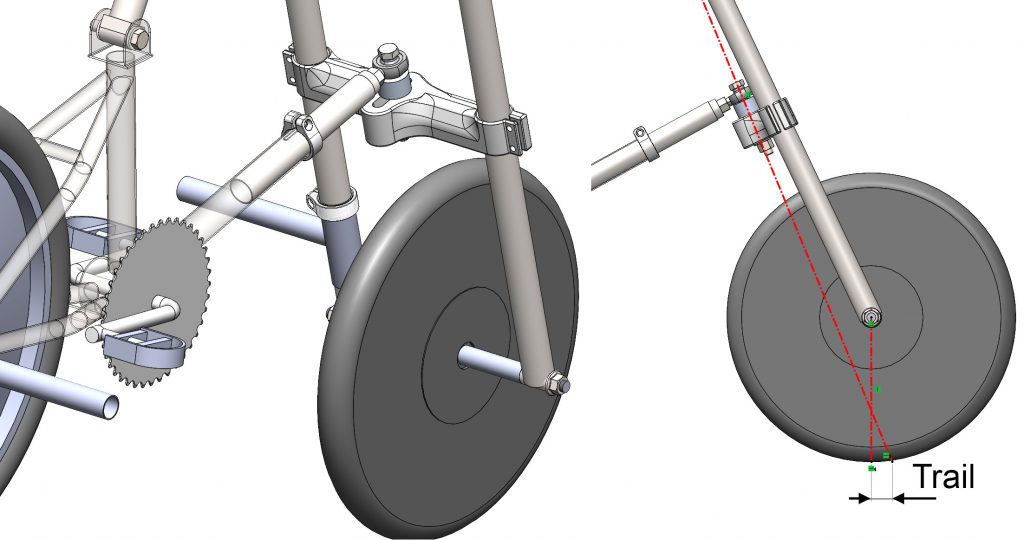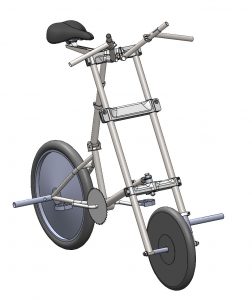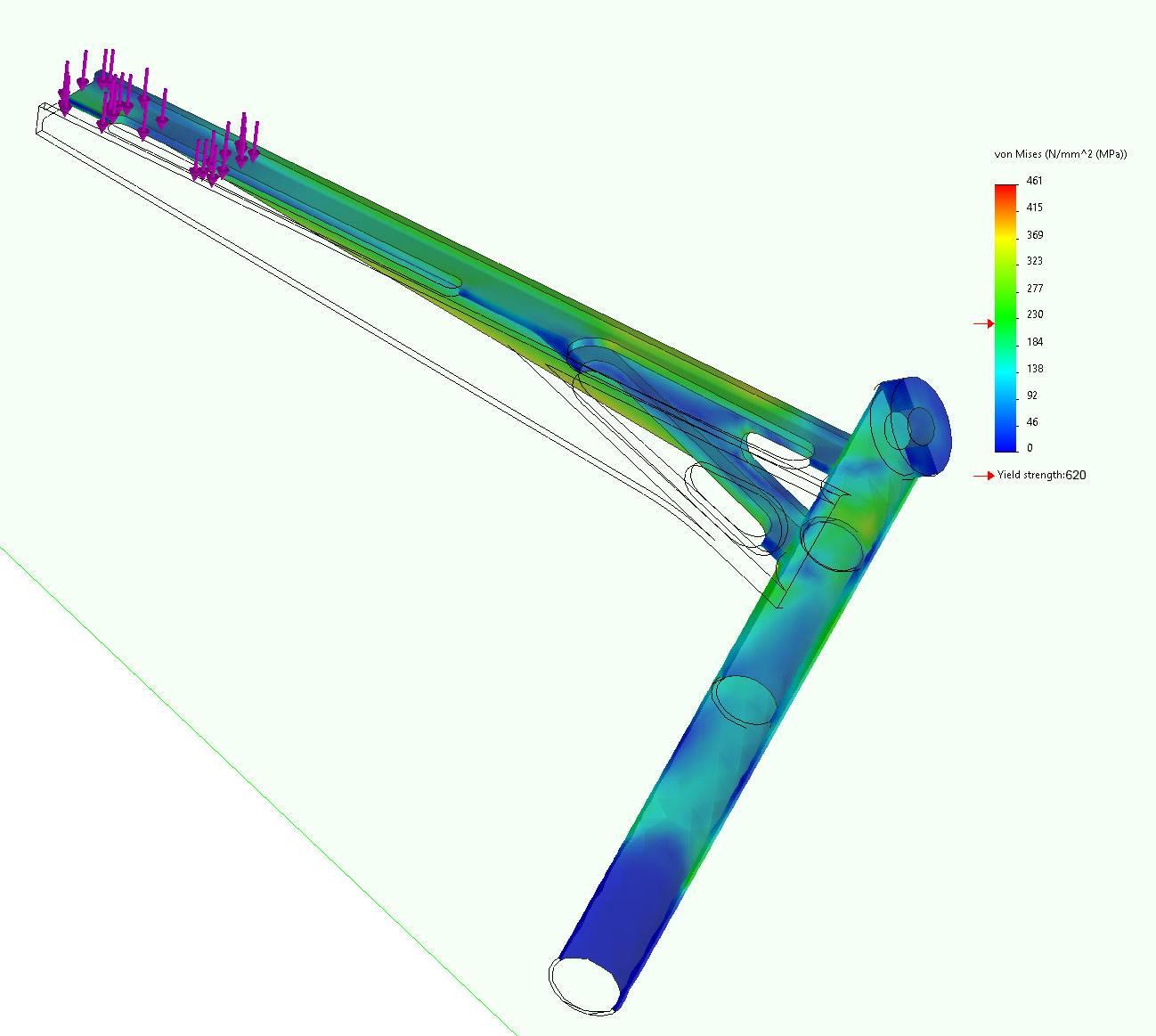This strange-looking bicycle won’t ever enter production. It’s simply a test rig used to try different riding positions and steering geometries. When designing a folding bike, it can be easier to achieve a compact and convenient fold if you don’t stick to the conventional full-sized bicycle geometry. We will be inviting our product test group to try riding it in different configurations to see how different people feel about different riding positions. If you’d like to give it a try, you can sign-up for the test group.

The main frame of this test bike forms a triangle, with each side telescopic. This allows the saddle height, steering angle, and wheelbase to be independently adjusted.

A further adjustment at the lower fork crown will allow the trail to be adjusted, without requiring a change in the steering angle. We’ll also be experimenting with some more unusual bicycle geometry adjustments, such as placing the front and rear wheels offset from the centerline. If our testing shows that this doesn’t have a negative impact on the handling of the bicycle, it could open up some useful options to achieve an even simpler folding action. The bike also uses an adjustable handlebar that will enable a wide range of riding positions and wrist angles.

The tubes sticking out from one side of the front wheel and the other side of the rear wheel are to test the effect of uneven luggage loading. Weights will be attached to these tubes to see how they affect the handling, helping us to specify the size of modular luggage attachements.
If you’d like to try riding with the different setups, why not sign-up for the test group and attend a test event in a city near you.
I fear that the saddle boom might fail with the weight of the rider.
Well spotted Matt and yes that’s a valid concern. The FEA confirmed that this part is highly stressed and we went through a few design iterations to ensure it will be strong enough for the tests. We’ve had to use T45 steel – an aerospace-grade with a yield strength of 620 MPa. We will also be doing physical stress tests before letting anyone ride the bike. I hope that reassures you.

It’s interesting that bikes always have the front wheel forks slope ahead of the pivot point (castor angle?). This means, when turning, it makes the wheel want to open the steering angle further with the result that that front wheel can end up at 90 degrees to your motion and going over the handlebars. If the forks sloped backwards it would make the wheel want to self-straighten back towards straight ahead
Bikes actually always have the point where the wheel touches the ground behind the point where the steering axis intersects the ground (known as trail). So the wheel does self-straighten – ‘castor effect’. The forward rake of the forks reduces the amount of trail but is never enough to make it negative, as you suggested. If the steering axis was vertical, then any amount of forward rake would indeed result in negative trail. What’s interesting is as well as the dynamic stabilizing force of trail, there is also a static destabilizing force known as ‘flop’.
Well done on making your prototype. I was wondering, are single sided hubs necessary with your design? When a 10 year old bike needs a new wheel, will it be easily available to the owner?